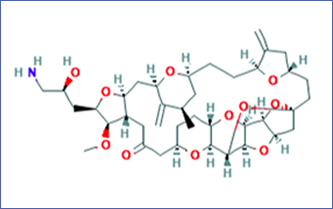4-minute read
Researchers in the laboratory studying eribulin mesylate
Learn How a Sea Sponge Is Helping to Fight Metastatic Breast Cancer



Halichondria okadai and the eribulin compound
Sitting motionless on the ocean floor gently filtering water for nutrients, the sea sponge Halichondria okadai may seem like an unlikely hero in the fight against metastatic breast cancer. But contained within their porous bodies lies a compound that is uniquely effective at destroying cancer cells: halichondrin B.1 This discovery inspired intensive investigations that, after decades of research, yielded a breakthrough in the form of a refined compound similar to halichondrin B called eribulin mesylate that would go on to be known as HALAVEN.2,3
From the sea to patients
Cancer cells reproduce and grow in an uncontrolled manner due to mutations in the genes.4 This growth process occurs by cell division, called mitosis.4 Microtubules are tiny structures that are essential to mitosis as well as other cellular processes.5 What does any of this have to do with sea sponges? The naturally occurring compound, halichondrin B, and its pharmaceutical counterpart, eribulin mesylate, have distinct structures that bind with the microtubules, interrupting mitosis and ultimately killing the cancerous cells.6 The video below explores the journey of this fascinating compound from the sea to patients.












